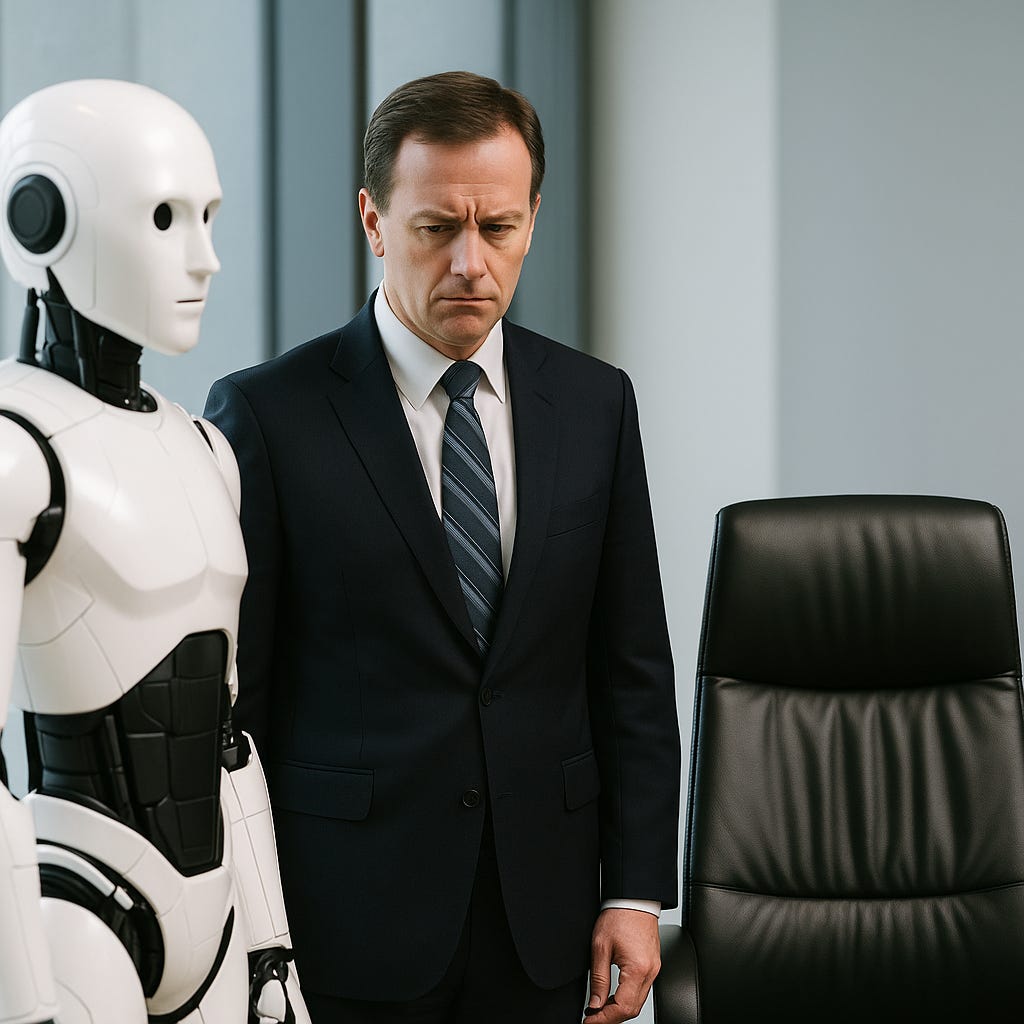Who Keeps Their Job?
The real impact of generative AI on jobs, from augmentation to automation, across the next decade.
Generative AI is changing how we work, not just who works.
Over the next 10 years, job disruption will be uneven, role-specific, and largely leader-determined.
Smart businesses will reskill and redesign, not just reduce, headcount.

Let’s be honest about the AI hype
We’re told every day that generative AI is either the greatest productivity boost since the internet or a pink slip generator for anyone with a desk job. The truth, as always, is somewhere in the middle. Over the past 18 months, we’ve watched generative AI become nearly ubiquitous in white-collar workflows: writing, research, coding, and summarising. It’s not sci-fi anymore. It’s in Google Docs, Microsoft 365, your CRM, your ad tech, your inbox. But the critical question for business leaders remains: Is AI replacing jobs, or just changing them?
The early evidence says this: AI is reshaping jobs faster than it’s replacing them. And whether you lose or gain from that shift depends less on the technology and more on your strategic choices.
This article is for the practical CEO, the COO who’s seen too many Gartner graphs, the founder trying to decide whether to freeze hiring or double down on growth. We’ll take a hard look at:
Which jobs are actually at risk (hint: it’s not just customer service)
Which roles will change, not vanish
What timelines really matter (short-, mid-, long-term)
How to use AI to add stakeholder value, not just strip headcount
This isn’t a techno-utopian essay or a fear-driven forecast. It’s a grounded read on the real occupational impacts of AI, backed by peer-reviewed studies, consulting data, and actual usage behavior from Microsoft’s own Copilot logs.
What’s happening now (0-2 years): AI as co-worker
If you’ve played with ChatGPT, Copilot, or Claude, you know the pattern: ask a question, get a decent first draft. Whether it's a job description, a product brief, or a code snippet, generative AI excels at first drafts, summarisation, and fast research. What it doesn’t do (yet) is replace you entirely.
Research from Microsoft found that AI in real-world use is mostly assisting people with tasks like writing and information gathering. The most common use cases? Generating content, explaining concepts, helping with research. In other words: AI is an intern, not a replacement.
So far, the job categories feeling the most impact include:
Administrative and clerical support
Marketing, media, and communications
Sales and customer service
Programming and analytics
But most of these jobs are seeing task automation, not role elimination. AI helps a marketer draft five campaigns instead of two. A customer support agent can resolve calls faster. A coder gets from blank screen to MVP in half the time.
Crucially, there is no evidence yet of AI-driven mass layoffs at scale. A few companies (IBM, Klarna) have paused hiring or trimmed small teams due to automation. But if you're seeing headlines about "AI taking jobs," look closer; most cuts are about cost, not Copilot.
What’s coming soon (3-5 years): Workflow reengineering
By 2028, expect AI not just embedded into individual tasks, but rearchitecting how work flows across departments. Invoice approvals, contract drafting, inventory management, training documentation, internal communications — all of these will likely be partially or mostly AI-assisted. You won’t just use an AI tool; you’ll work within AI-augmented systems.
This will change not only productivity but also team structures. Many support roles will consolidate. A product marketing manager might work directly with AI to draft collateral and generate competitive analysis, bypassing layers of assistants or analysts. Recruiters will pre-screen candidates via automated assessments, only intervening in the final selection.
McKinsey forecasts that 12 million occupational transitions may be needed in the U.S. alone by 2030 due to AI and automation. Most impacted: office support, customer service, food service, and basic accounting roles.
But the bigger story is in mid-skill professional roles: account managers, project coordinators, operations analysts. These will survive, but the bar will rise. AI-augmented teams will need fewer headcount to generate more output, making performance variance sharper: those who can leverage AI will outperform those who can’t.
The implication for business leaders is twofold:
Treat AI literacy as a core competency.
Start analysing roles as task clusters that can be modularised, automated, and reconfigured.
What’s further out (6-10 years): Roles rewritten, some retired
In the 2030s, the question won’t be whether to use AI, but how to orchestrate entire systems of humans and machines.
Some roles will vanish altogether, particularly those where:
Tasks are routine and predictable.
Judgment, creativity, or empathy are not required.
There is limited stakeholder interaction or accountability.
Expect deep shrinkage in areas like:
Transactional finance roles (e.g. reconciliations)
Junior-level copywriting and creative production
Generic data analysis/reporting
Low-level project management
But others will thrive, especially where human-centric work is irreplaceable:
Healthcare and therapy
Skilled trades
Education and coaching
Complex decision-making roles in law, strategy, and ethics
There’s also a wildcard: new jobs we haven’t invented yet. Think AI ethicist, human-AI interaction designer, synthetic data architect, prompt systems trainer. These roles won’t be fringe; they’ll be table stakes inside major organizations.
If you’re still managing job categories based on today’s org chart, you’re already behind.
The CEO’s Playbook: Making AI Add Value, Not Just Cut Cost
This is where it gets real. AI isn’t a side project anymore. It’s a redefinition of work at every level. For CEOs and senior leaders, this requires action across four dimensions:
Workforce Intelligence: Map work, not jobs
Reskill with intent
Redesign your org chart
Make AI part of your value promise
1. Workforce Intelligence: Map work, not jobs
Break down roles into task clusters. Ask:


